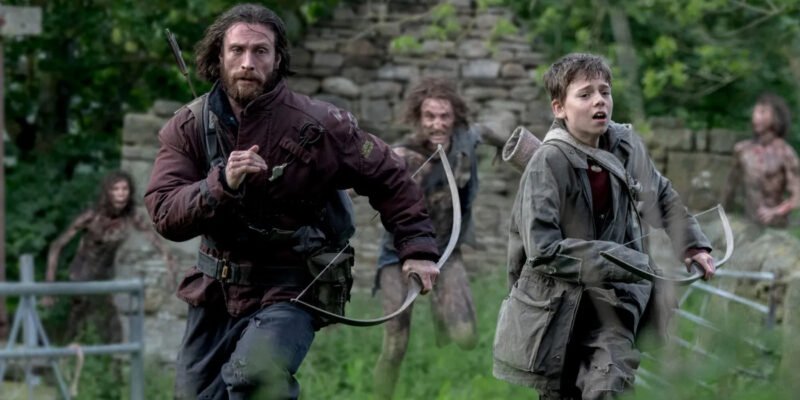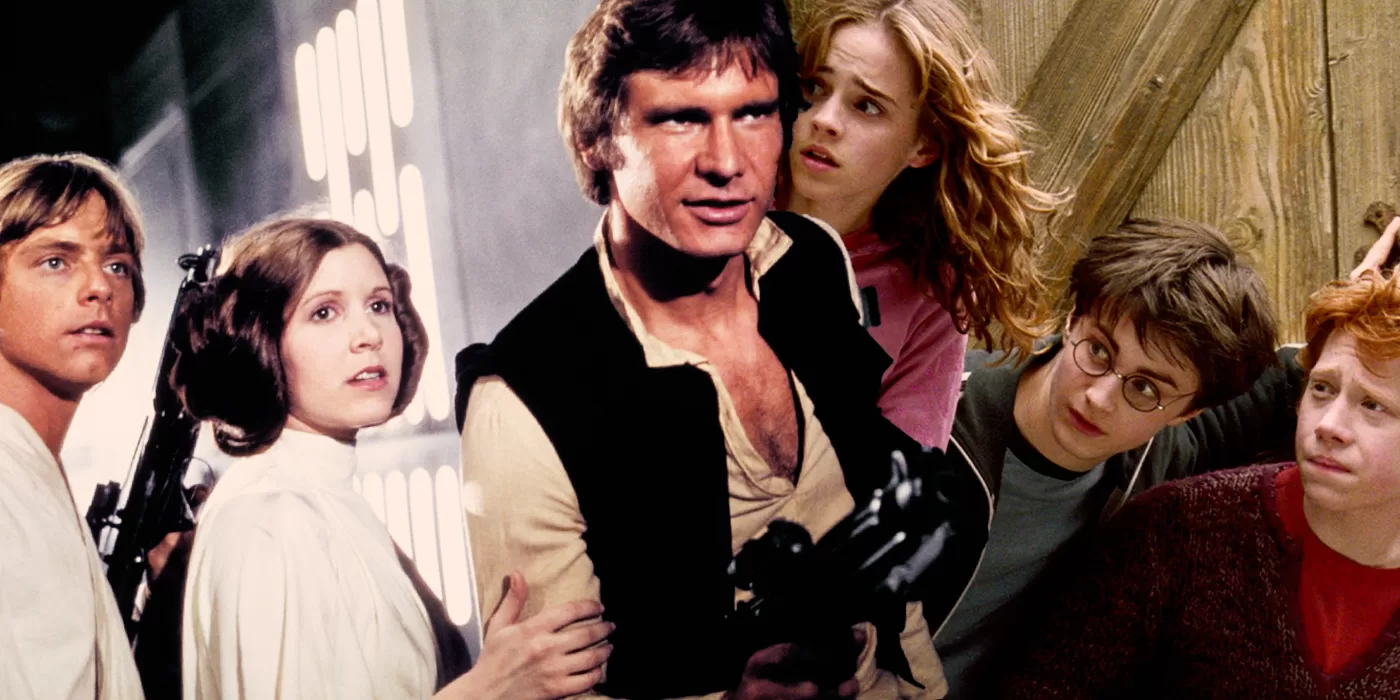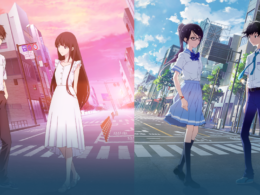Warning: This article contains major spoilers for 28 Years Later.
Back in 2002, director Danny Boyle and writer Alex Garland had just $8 million to put together a zombie movie that would change the horror sub-genre forever. Starring a young Cillian Murphy in a breakout lead role, the film, despite not actually containing the classic movie monsters, would revolutionize the way viewers see them. Without 28 Days Later, there might not be a Walking Dead, perhaps no World War Z, and definitely no 28 Years Later.
After a 23-year wait, Boyle and Garland are back together for the latter-mentioned sequel, set 28 years on from the outbreak of the rage virus. Now quarantined from the rest of the world, an isolated Britain has been desolated by the infected. However, the island village of Lindisfarne hosts a small community split from the mainland, which has rebuilt some semblance of normality. On this island, we meet a 12-year-old Spike (Alfie Williams), who lives with his macho father Jamie (Aaron Taylor-Johnson) and his ill and confused mother Isla (Jodie Comer).
’28 Years Later’ Doesn’t Shy Away From Visceral Horror
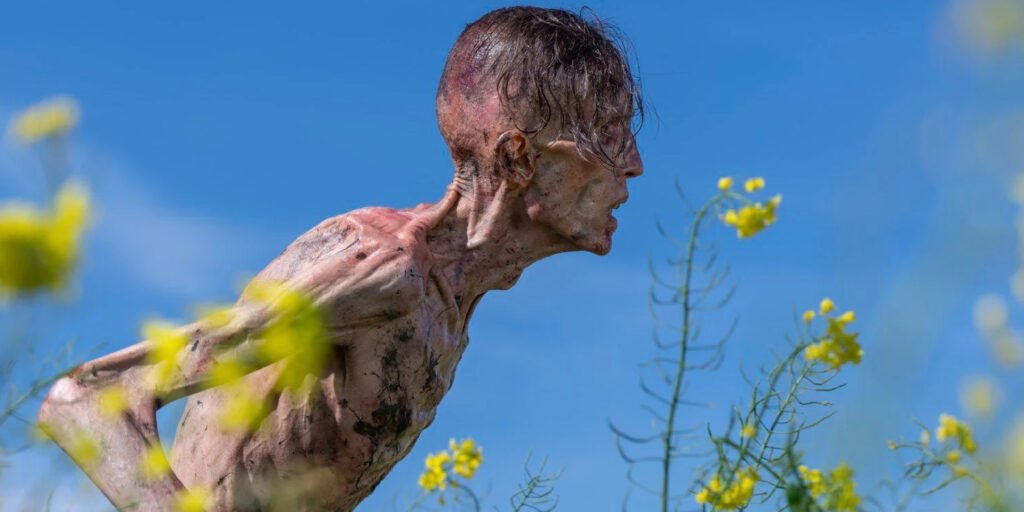
28 Years Later makes its mission statement known, much like the original, in the opening moments. After revealing the violent death of a young boy’s family at the start of the outbreak, the film introduces another montage of historic human violence similar to the original. However, this time, the violence is war-based and features strategic army attacks on recognized enemies. This is the perfect update to the 28 franchise, immediately letting audiences know that humans may have evolved during the chaos, but their violent streak is still just as prevalent — now simply dressed in professional clothing.
Like the humans on the island, the infected have evolved too, keeping Boyle and Garland’s streak of showcasing the two in obvious parallel alive. Via an early trip to the mainland with Spike and Jamie, we are introduced to the three tiers of infected: the slow, crawling threat; the normal infected; and the Alpha: an infected larger, faster, and harder to destroy than any other.
This trip to the mainland is the film’s best source of horror, using a violent soundscape and clever camerawork — such as pausing to let us see the moment an arrow pierces the neck — to perfectly set the tone. 28 Years Later’s first half is both a doting homage to the original in its capturing of the same visceral thrills and a needed evolution 23 years on. However, the intent to keep to a similar, found-footage-adjacent camera style is not as impactful with a much bigger budget.
’28 Years Later’s Second Half Tonal Shift Is a Surprising Yet Genius Move
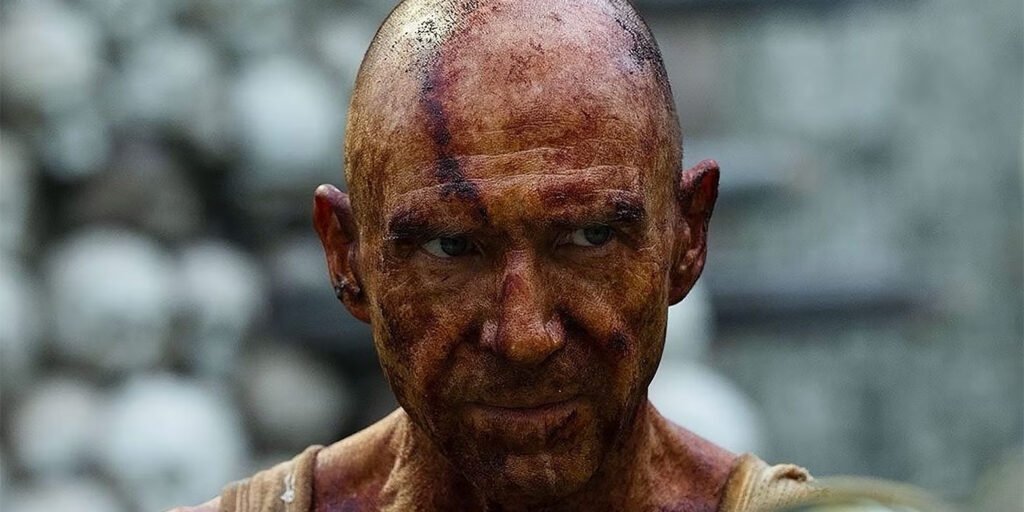
With 23 years having passed, the biggest mistake Boyle and Garland could have made was to make a direct sequel to 28 Days Later. Thankfully, the duo understood their assignment and spiritually lifted the original story, translating it for a 2025 audience. In doing so, the post-9/11 discussion of “humans killing humans” is expanded to a post-Brexit exploration of a Britain isolated from Europe, mirroring the evolution of a chaotic response to 28 days of the infected into 28 years of living with it. There are moments within the story, such as the introduction of the aggressive yet oddly charming Erik (Edvin Ryding), that hammer home this message with the force of an Alpha, leaving any nuance at the door. However, these moments are crucial to the understanding of the movie’s second half and the relationship between Spike and his mother.
28 Years Later makes the bold choice to sacrifice thrashing horror in its first half for a philosophical discussion of the meaning of death in its second. After Spike decides to take his mother to the mythologized Dr. Kelson, portrayed by a scene-stealing Ralph Fiennes, the film U-turns in tone, and is all the better for it. Whereas losing some of the horror elements won’t sit well with the blood-hungry zombie movie fans in the crowd, Garland’s streak of laying hard truths on a bleak backdrop continues with aplomb. It is in this second half that the performances in 28 Years Later are at their best, highlighted by a breakout Williams who has all but cemented his name as “one to watch.“
— Major spoilers beyond this point —
’28 Years Later’ Finds a Moving Resolution That Ignores the Infected
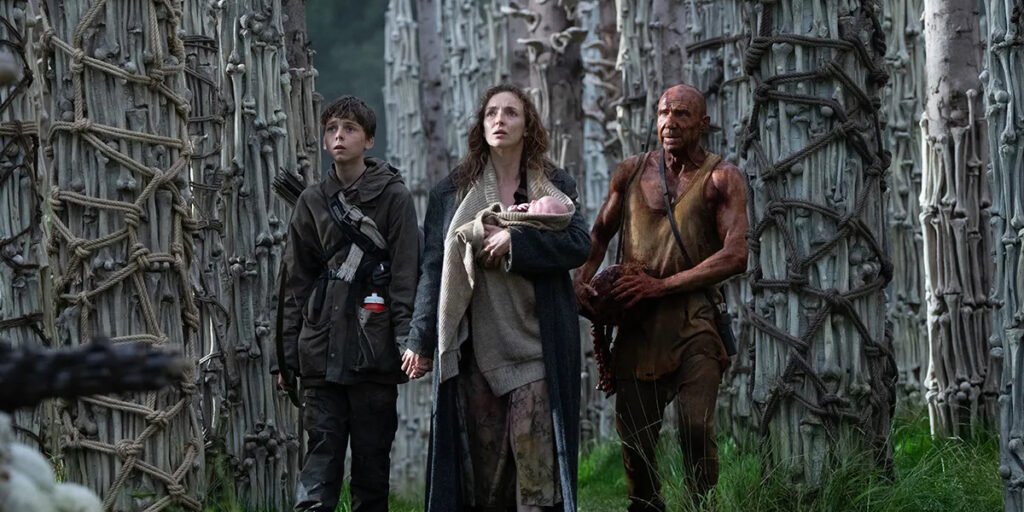
The violent breathlessness in the first half is beautifully juxtaposed by a second that takes its time to breathe, holding a discussion on not just grief, but the very essence of death and its meaning. This culminates in the reveal that Isla has cancer, and the cancer is but a breath away from killing her. In a land where the threat of death is so constant that guards must wait at the gates to keep it out, the quiet reality of the force’s ever-presence is what finally and inevitably makes the checkmate move.
However, hope persists in the form of a baby born to an infected, with Spike encouraged to head back to his island to offer the newborn a chance to live; He even names her after his mother in a moment sure to draw a tear. Sadly, this perfectly poignant tonal ending is, at the very last moment, sacrificed for a questionable ode to the infamous Jimmy Savile, as Jack O’Connell’s cult leader Jimmy is introduced and the next installment, 28 Years Later: The Bone Temple, is set up. This ending leaves a sour taste in the mouth, and one that sadly removes some of the devastating and brave choices Garland and Boyle make in the second half.
’28 Years Later’ Doesn’t Quite Match the Heights of ’28 Days Later’
It is impossible not to compare 28 Years Later to the 2002 first installment. Although both are different in so many ways, Boyle and Garland make the deliberate choice to offer glaring callbacks to the first film (although thankfully without so much Pepsi product placement). In doing so, the comparison becomes inevitable, and the high bar set by the original masterpiece isn’t quite reached by this latest effort, even if 28 Years Later is more consistent in its quality.
Nevertheless, this is still one of the best zombie movies in years, and a reminder that, in the right hands, horror can be the perfect vessel to reflect our existence. 28 Years Later is a valiant update on this genius franchise, and one that certainly doesn’t disappoint… even if we did have to wait 23 years.
28 Years Later is in theaters now. Follow Agents of Fandom on socials for all the latest entertainment news and reviews.
'28 Years Later' Review
'28 Years Later' ReviewThe Good
- Breakout star Alfie Williams and a scene-stealing Ralph Fiennes are just two of a selection of great performances.
- Danny Boyle and Alex Garland bravely steer into new emotional territory.
- The visual horror is striking and effective.
The Bad
- A disappointing final scene leaves a sour taste in the mouth.
- Some of the cinematic choices are better catered to the low budget of the first movie.





